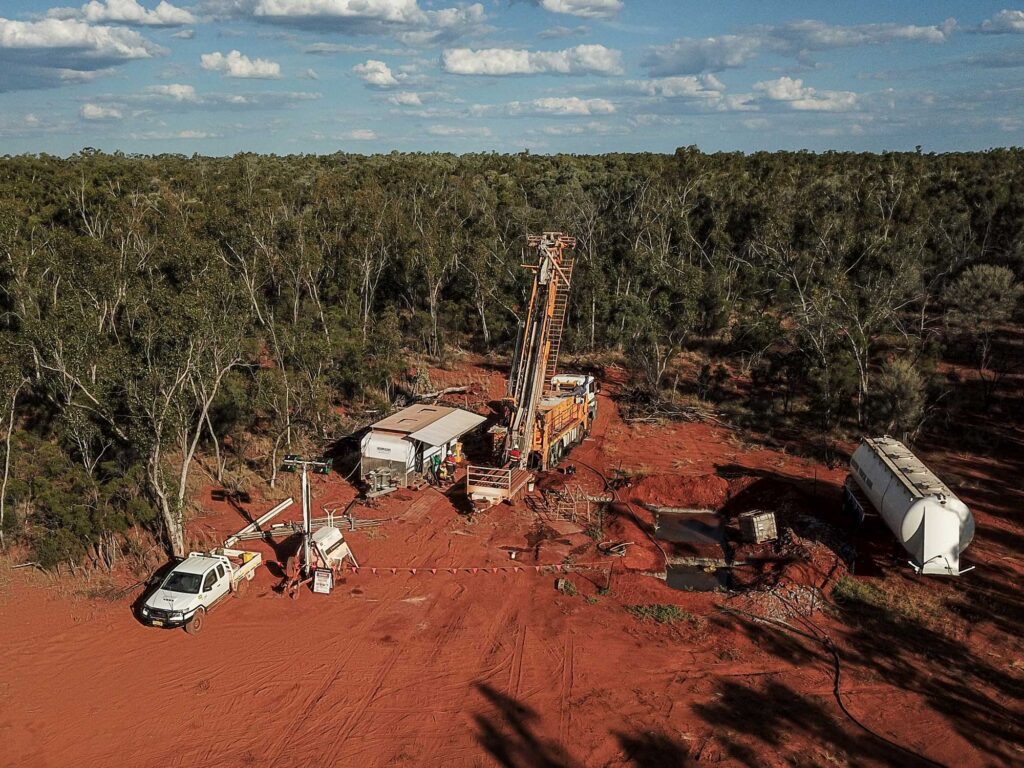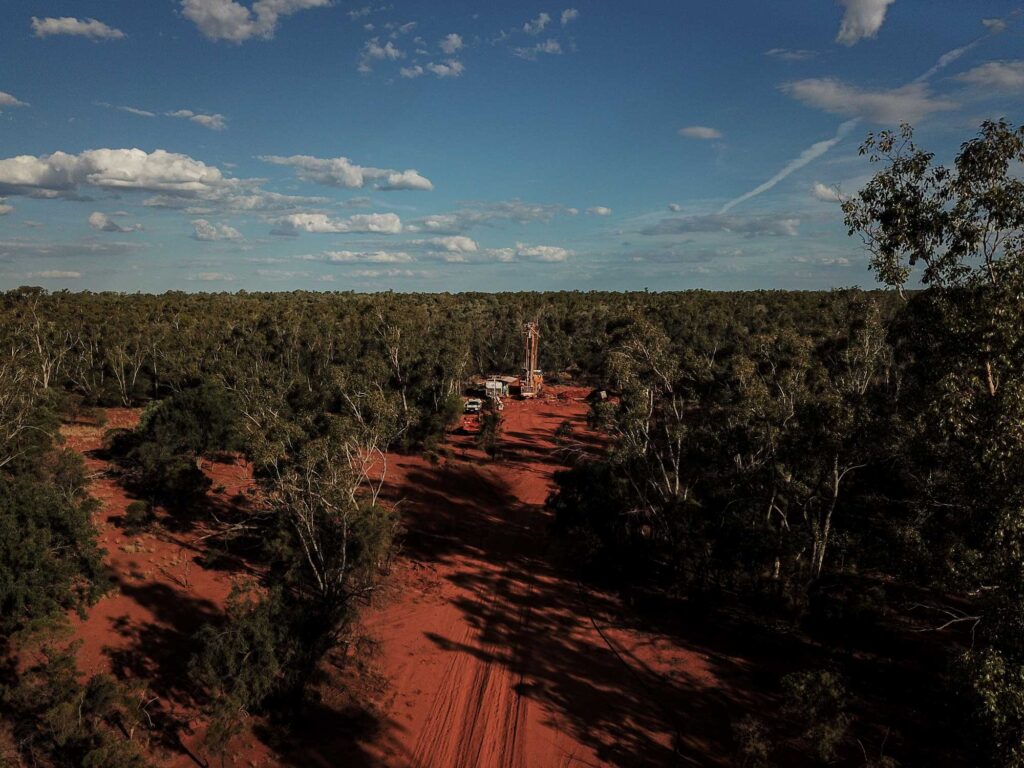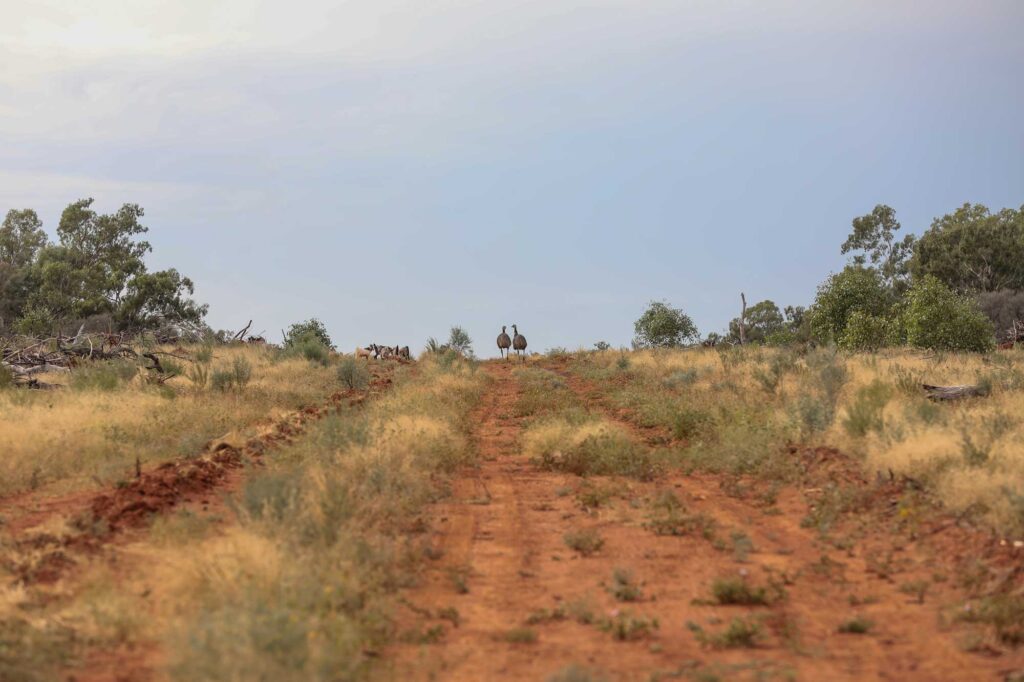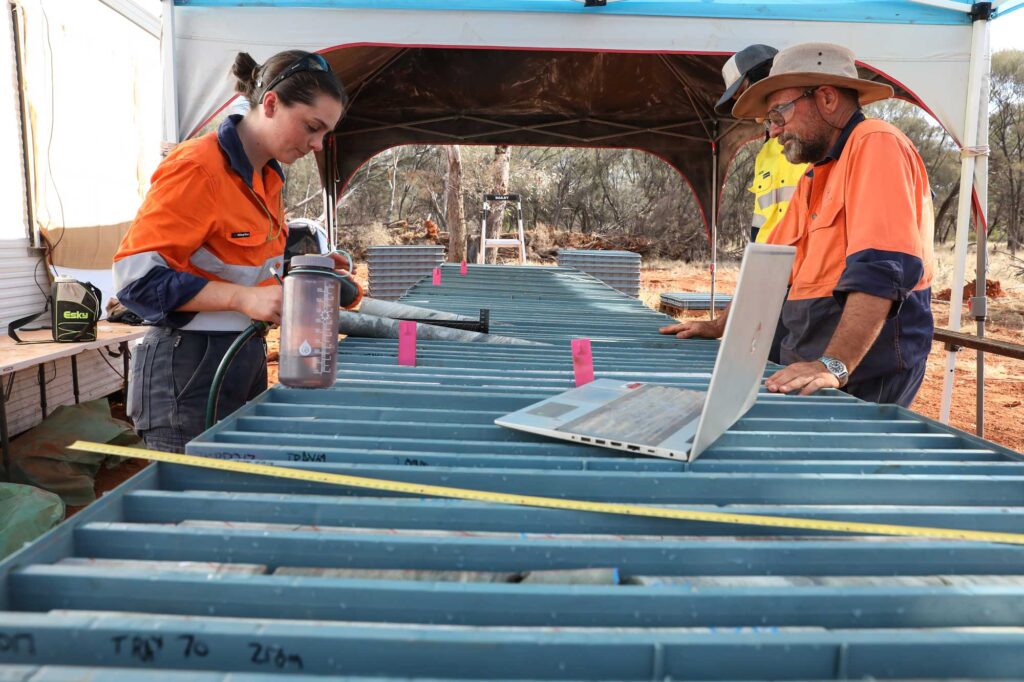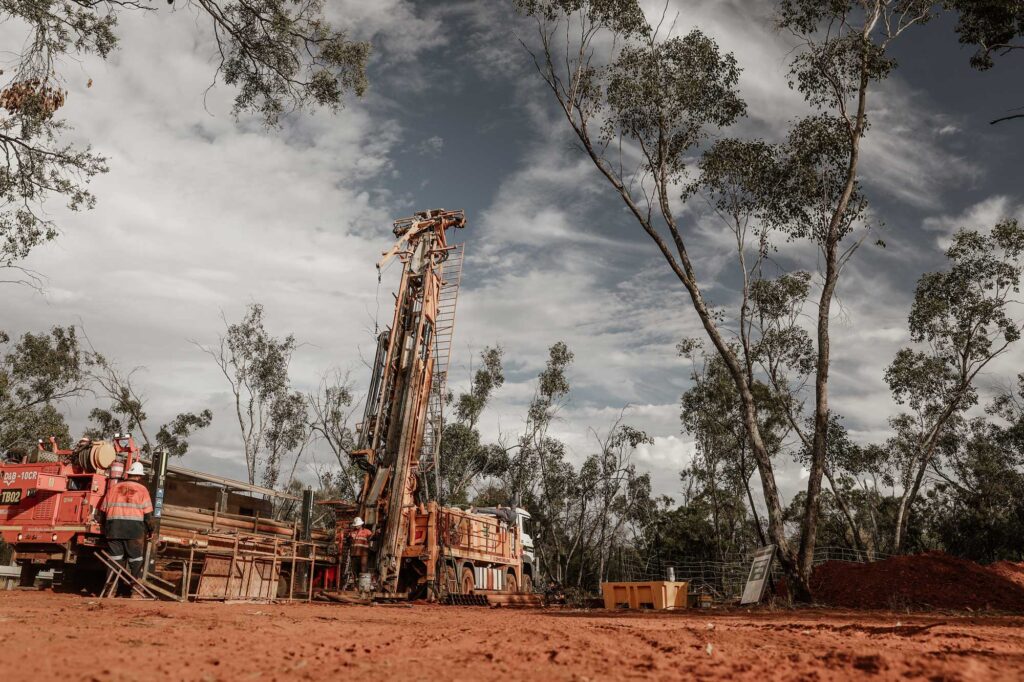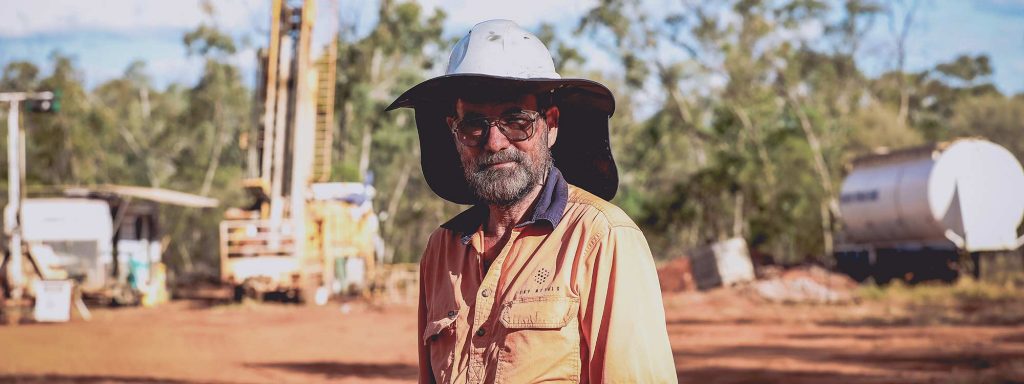Doradilla (100% SKY)
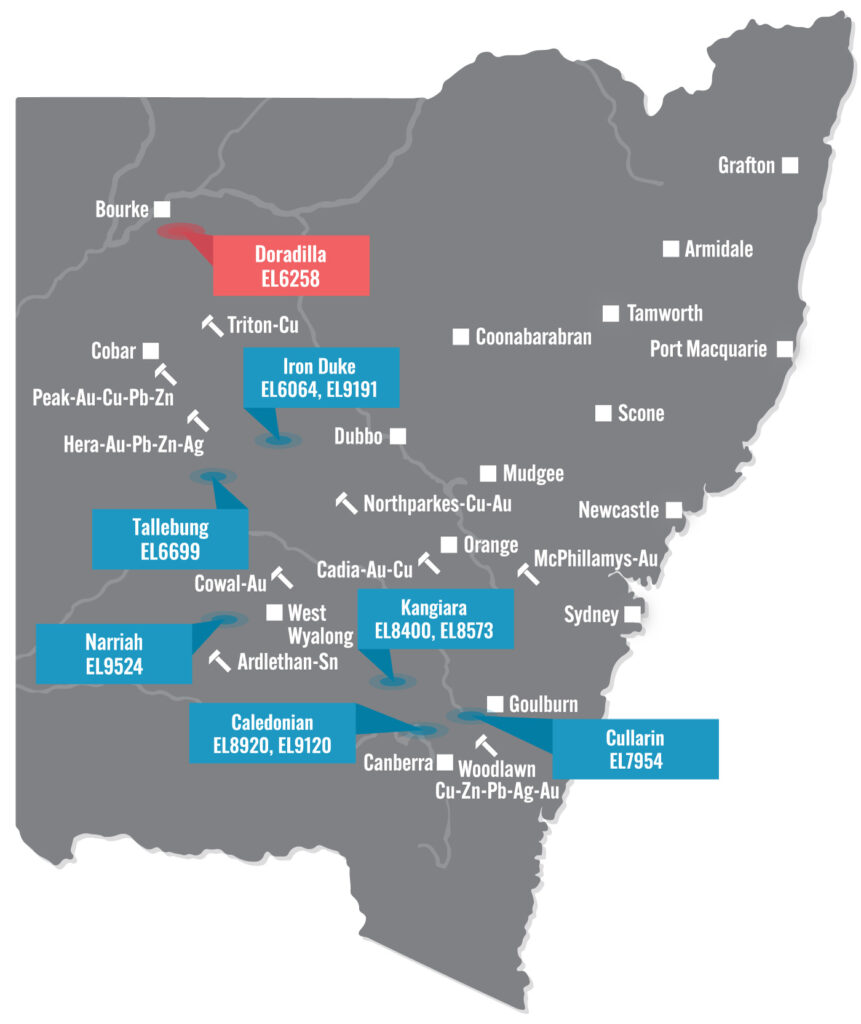
The Doradilla Project is located approximately 45km south-east of Bourke in western New South Wales and is considered prospective for polymetallic tin, copper, silver, bismuth, indium and zinc mineralisation. Most recently, SKY has discovered a widespread, and large high-grade REE mineral system in the thick layers of clays over the Doradilla Project.
Mineralisation at Doradilla was discovered in the 1970s after regional magnetic surveys identified the 16km long strike hosted within the extensive Doradilla-Midway-3KEL skarn (‘DMK Line’) The DMK Line extends for the length of over 16km and is a 40-100m wide skarn zone of tin and polymetallic mineralisation and has now also been identified as the host to high-grade REE mineralisation along the entire 16km length of the DMK Line.
Discovery & Early Exploration
Previous exploration has focused heavily on the tin content of the DMK Line, and predominately on the oxide mineralisation which overlies the primary zone mineralisation. Work on the DMK line slowed in the 1980s when the oxide zone tin was found to be metallurgically difficult, however the primary zone tin, in a mineral called Malayaite, has been established as being amenable to smelting in concentrates over 30% Sn and as such remains a potential important source of tin for the future.
Geology
Geologically, the Doradilla area lies between the Lachlan and Thompson Orogens with mineralisation associated with the re-assigned Triassic aged Midway Granite, now considered by the Geological Survey of New South Wales to be analogous to the major tin granites in the New England Orogen, where tin was first successfully mined in Australia in the 1800s.
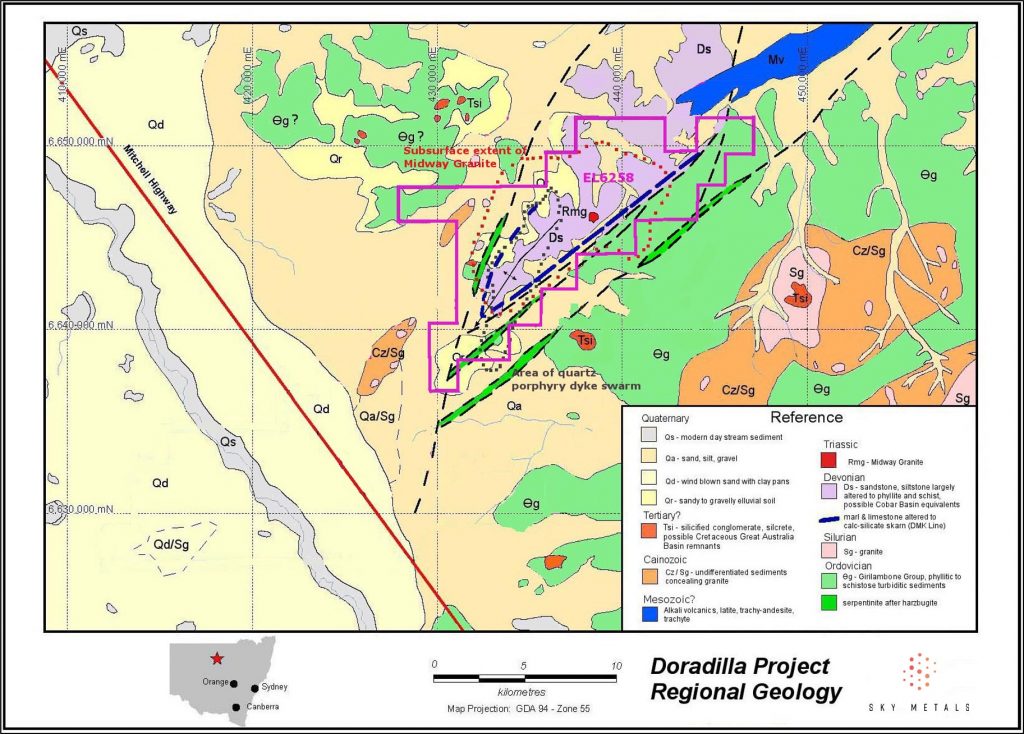
Sky Metals Exploration
In 2019 SKY drilled 4 holes at the 3KEL Target on the north-eastern end of the 16km DMK Line. This program included the first hole to intercept the primary zone at the 3KEL Target in over 35 years, hole 3KRC002. Results included:
- 3KRC002: 6m @ 1.11% Sn & 1.48% Cu from 105m
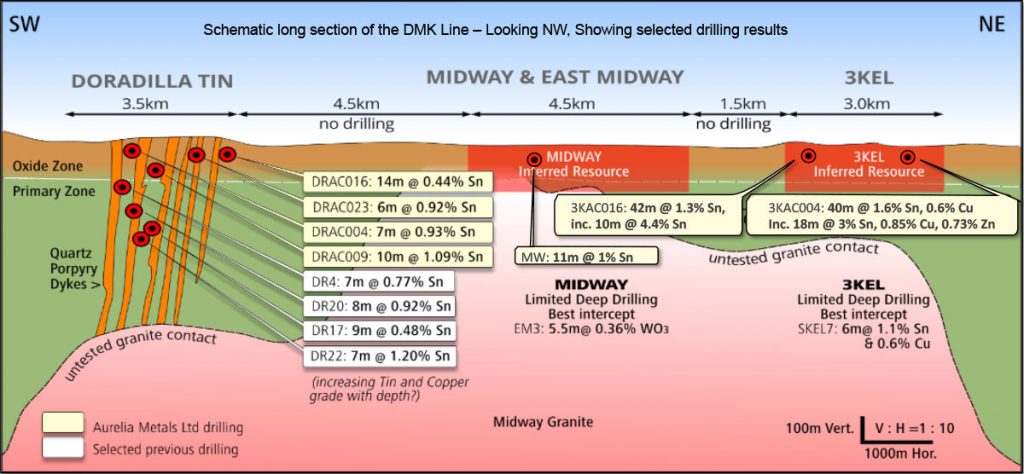
In 2020 SKY flew a detailed magnetic survey over the DMK Line to target the DMK mineralisation more accurately and in 2021 completed a second program of RC and diamond drilling of the 3KEL Target using this magnetics data. Drilling intercepted consistent, wide and strong tin mineralisation with results including:
- 3KRCD007: 45m @ 0.42% Sn from 35m Including;
10m @ 1.07% Sn & 0.15% Cu from 60m - 3KRC011: 32m @ 0.42% Sn from 66m Including;
9m @ 0.99% Sn & 0.31% Cu from 81m - 3KRC012: 37m @ 0.31% Sn from 91m including;
1m @ 4.23% Sn & 0.20% Cu from 121m - 3KRC009: 14m @ 0.46% Sn from 135m
- 3KRCD010: 4m @ 1.10% Sn & 0.21% Cu from 135m
Then in late 2022, following recognition that the Midway Granite’s chemistry made it prospective for REE mineralisation, SKY reassayed past drill sample for REE. This reassaying discovered thick, high-grade REE mineralisation along the whole length of the DMK Line at all three historic tin deposits, Doradilla, Midway and 3KEL.
- AMW10: 33*m @ 4981ppm (0.50%) TREO from 15m, including; 12m @ 8781ppm (0.88%) TREO from 25m.
- DRAC016: 20*m @ 3179ppm (0.31%) TREO from 16m, including; 2m @ 5657ppm (0.57%) TREO from 18m.
- DRAC020: 10m @ 2894ppm (0.29%) TREO from 38m, including; 4m @ 6023ppm (0.60%) TREO from 44m.
- DRAC023: 24*m @ 2628ppm (0.26%) TREO from 18m, including; 4m @ 3731ppm (0.37%) TREO from 22m.
- AMW23: 26*m @ 2329ppm (0.23%) TREO from 10m, including; 10m @ 3407ppm (0.34%) TREO from 15m.
*Intercept is either open up hole, open down hole, or open in both directions.
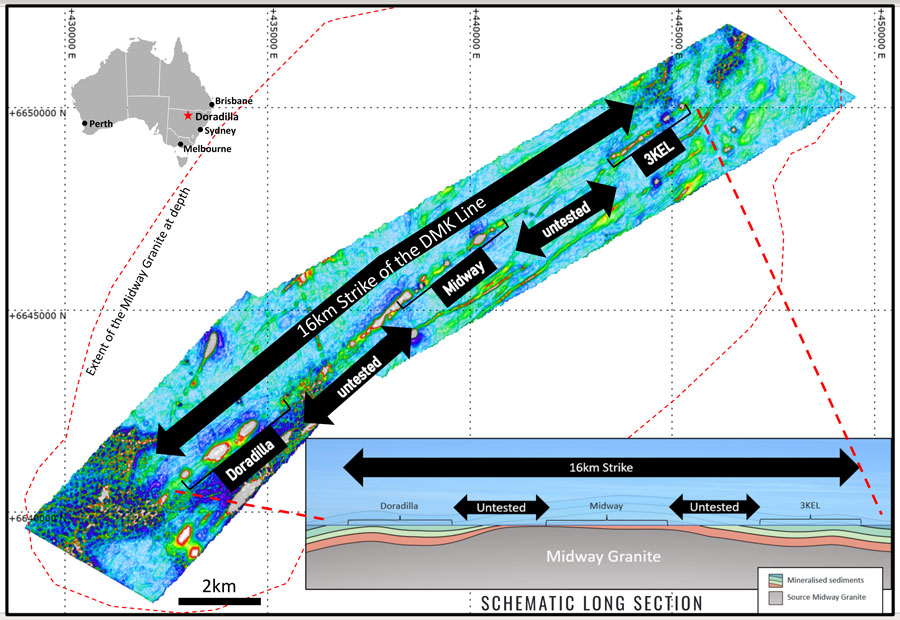
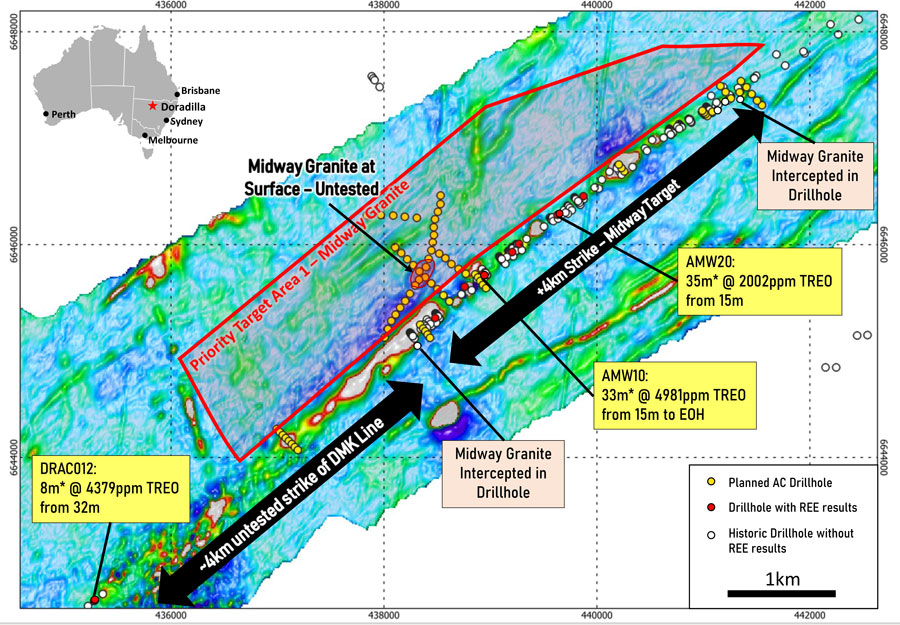
Future Work
Priority Target Area – Midway Granite
Samples from the latest aircore drilling program have been sent to ANSTO to test extraction of the REE via AS (ammonium sulphate) leaching or for investigation with other extraction methods if required. However, the Midway Granite samples and other areas of the Midway Deposit, possibly represents a discrete type of REE mineralisation and, therefore, different chemistry from the previously tested mineralisation. Therefore, it is possible that this mineralisation will be more amenable REE extraction via AS leaching than previous samples tested.
More broadly, SKY is continuing to progress the preliminary work on the nature and potential metallurgical pathways for the extraction of the high value REE and tin-polymetallic mineralisation at Doradilla. This has commenced with the REE mineralisation characterisation work and review of past metallurgical work currently being completed at ANSTO and UNSW to begin investigating potential metallurgical pathways.
A first pass trial of ammonium sulphate (AS) leaching at a solution pH of 4 and pH of 3 by ANSTO for samples from the DMK Line has not shown promise for economic extraction of REE via this method. However, this is one of many possible alternatives for economic extraction which can be investigated. It is likely that a number of other extraction pathways will be available given the strong grades and the high value of mineralisation present at the project.
SKY will continue to work with ANSTO, along with other experts, to further test a broad range of methods available to extract the REE, tin and polymetallic mineralisation on the DMK Line and mineralisation more widely discovered at Doradilla.
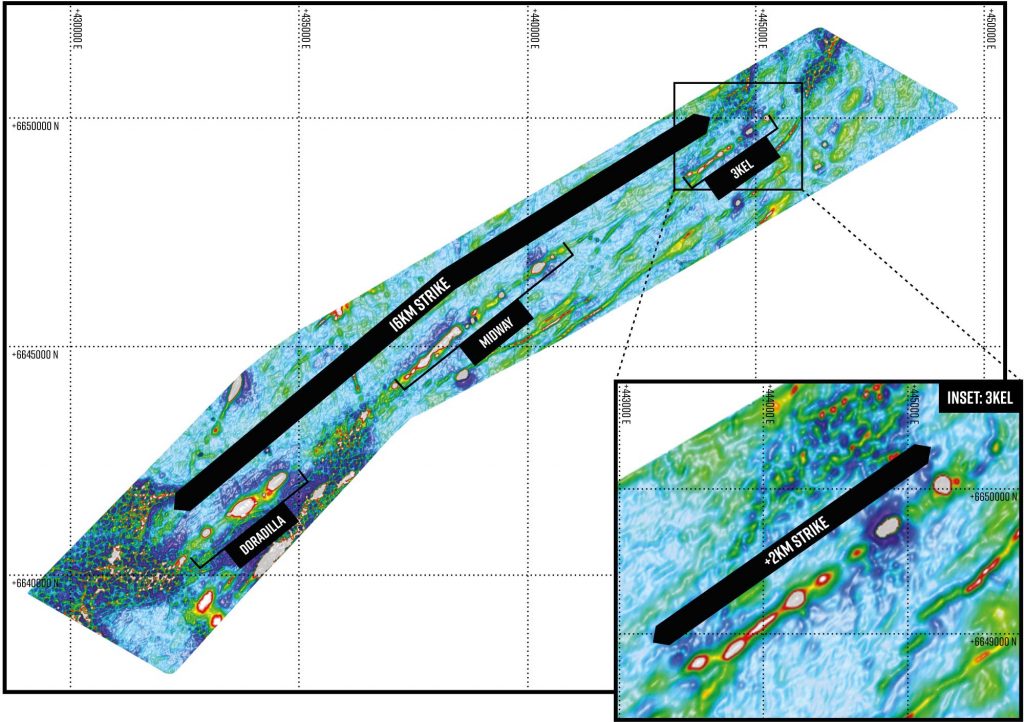
In addition to REE and tin, the Doradilla Project also represents a strong exploration target for copper, silver, bismuth, zinc and indium. In particular, the supergene tin- laterite deposits currently identified at 3KEL & Midway have the potential to contain economic levels of copper and zinc mineralisation based on the few holes that have been assayed for these metals. A considerable amount of previous drilling was assayed for tin only, with no systematic exploration carried out for any other metal.
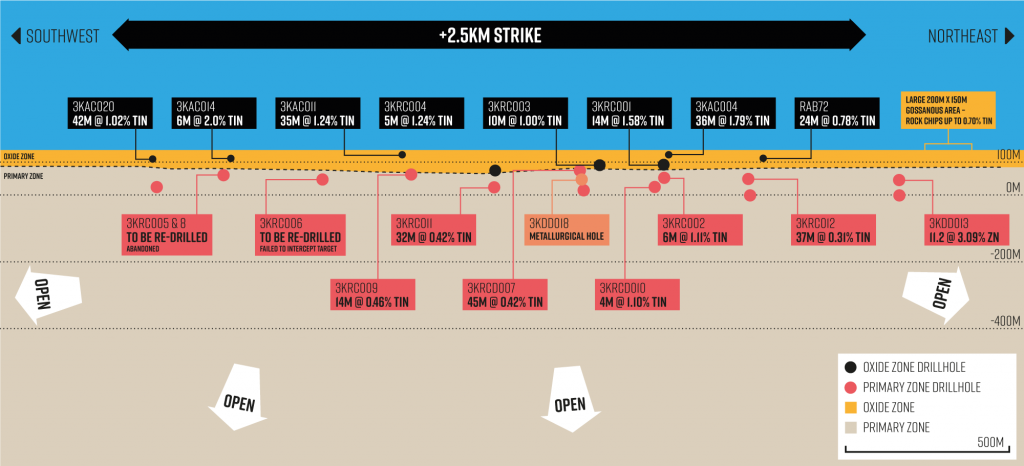
Drilling by SKY and YTC Resources confirmed the tin laterite mineralisation at the 3KEL deposit is also rich in copper, zinc, indium and bismuth. Metallurgical testwork on the copper mineralisation in the oxide at the 3KEL Target show +90% recoveries of copper via acid leaching.

